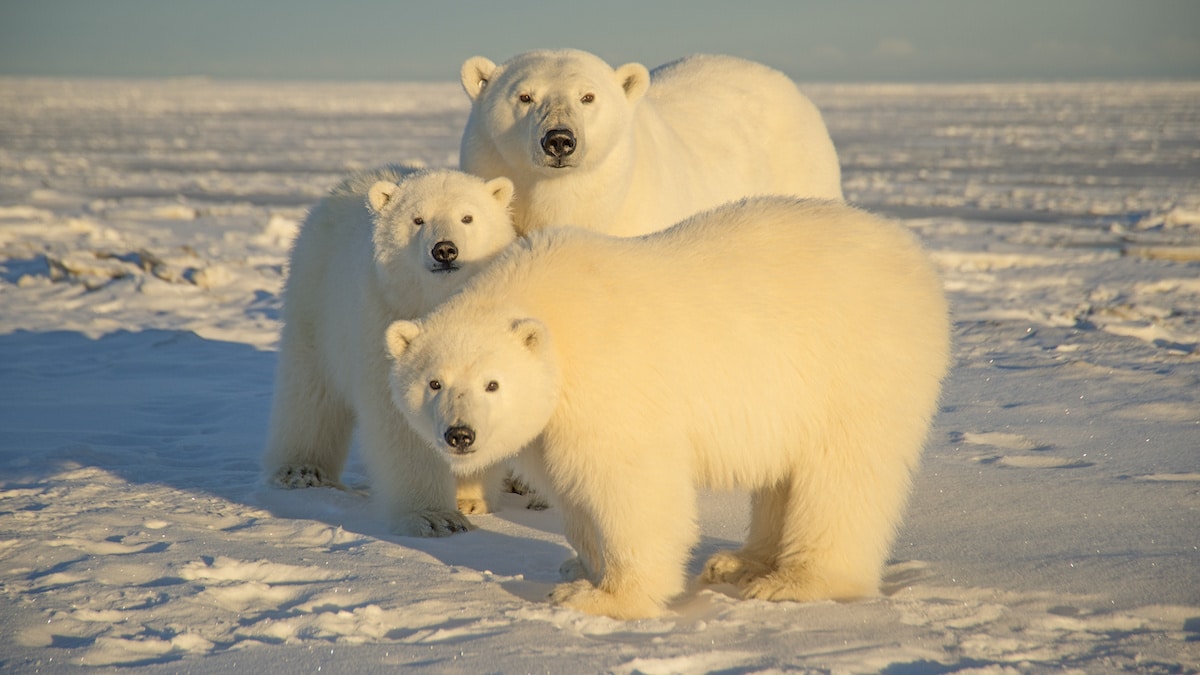
Trump Admin Pushes Final Drilling Plan for Arctic National Wildlife Refuge

A polar bear with cubs at the Arctic National Wildlife Refuge in North Slope, Alaska in 2014. Steven Kazlowski / Barcroft Medi via Getty Images
The Arctic National Wildlife Refuge, thanks to protections put in place 60 years ago, has remained a pristine oasis in the most remote section of Alaska. Now, the Trump administration is finalizing plans to end those protections and to lease the federal lands to oil and gas exploration, according to The New York Times.
The maneuver will allow oil and gas companies to exploit the vast reserves that sit under what environmentalists call “the last great wilderness,” according to The Guardian.
The Arctic National Wildlife Refuge is estimated to sit above billions of barrels of oil. However, the 19-million acre sanctuary is home to polar bears, various waterfowl, migrating caribou and Arctic foxes that make the area their year-round home. In all, the refuge is home to more than 270 species, including the world’s remaining Southern Beaufort Sea polar bears, 250 musk oxen and 300,000 snow geese, according to The Washington Post.
The Trump administration plans to open the perimeter to drilling, roughly 1.6 million acres in coastline, as The New York Times reported.
The Department of the Interior said it had completed all the requisite reviews and intended to start selling leases to the land soon. Speaking to reporters, Secretary of the Interior David Bernhardt said, “I do believe there could be a lease sale by the end of the year,” as The New York Times reported.
Bernhardt added that offering the leases, “marks a new chapter in American energy independence” and predicted it could “create thousands of new jobs,” according to CNN.
He also said in his conference call with reporters that he was moving forward with a 2017 budget bill, passed by a Republican-led congress, that insisted that the Federal government open up oil and gas leasing on the Arctic National Wildlife Refuge, according to The Washington Post.
The push to open up the wildlife refuge marks a significant energy policy for an administration that has been hostile to the urgency of the climate crisis and invested heavily in greenhouse gas-emitting fossil fuels. According to research from the Centers for American Progress, the drilling would result in more than 4.3 billion tons of CO2 emissions, which is roughly 75 percent of the nation’s annual carbon dioxide emissions, according to The Washington Post.
“This is our nation’s last great wilderness,” said Adam Kolton, the executive director of the Alaska Wilderness League, as The Guardian reported. “Nowhere else in the five-nation circle polar north do you have such abundant and diverse wildlife.”
The migrating porcupine caribou is important to the culture of the indigenous Gwich’in people, many of whom reside alongside the caribou’s migrating pattern.
“This area they just opened is their calving grounds,” said Bernadette Demienti, executive director of the Gwich’in steering committee, as The Guardian reported. “This is a place that is so sacred to the Gwich’in that we don’t go there. Our creation story tells us that we made a vow with the caribou that we would take care of each other. They have taken care of us, and now it is our turn to take care of them.”
Demienti added that the caribou have already started to change their migration pattern as global warming afflicts the Arctic at a rapid pace, changing the landscape and the vegetation that the ruminants rely on.
Environmentalists like Kolton intend to fight the leases in federal court, where a protracted legal battle is expected to play out.
“We will continue to fight this at every turn,” said Kolton in a statement, as The New York Times reported. “Any oil company that would seek to drill in the Arctic Refuge will face enormous reputational, legal and financial risks.”
- Judge Says Trump's Plan to Allow Drilling in Arctic Ocean Is ...
- Trump Moves to Open 1.5 Million Acres of Alaskan Refuge for Oil ...
- Investors Controlling $2.5 Trillion Stand With Indigenous People ...
- Will Oil Companies Drill in the Arctic National Wildlife Refuge? - EcoWatch
- Trump Administration Plans Seismic Testing for Oil in Arctic National Wildlife Refuge This Winter - EcoWatch

 233k
233k  41k
41k  Subscribe
Subscribe 